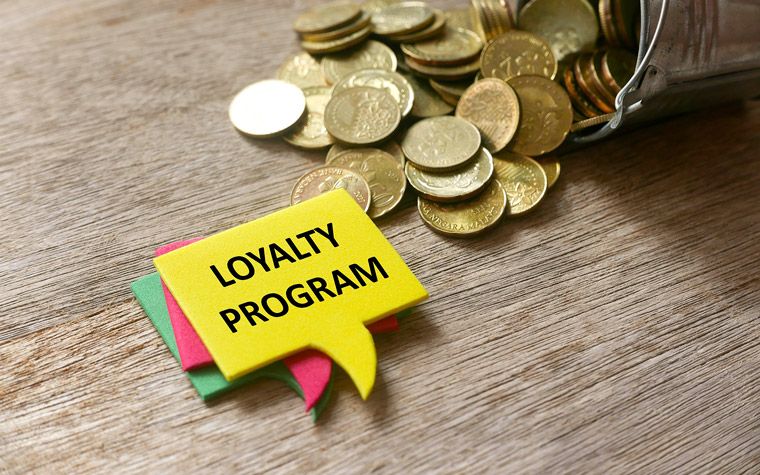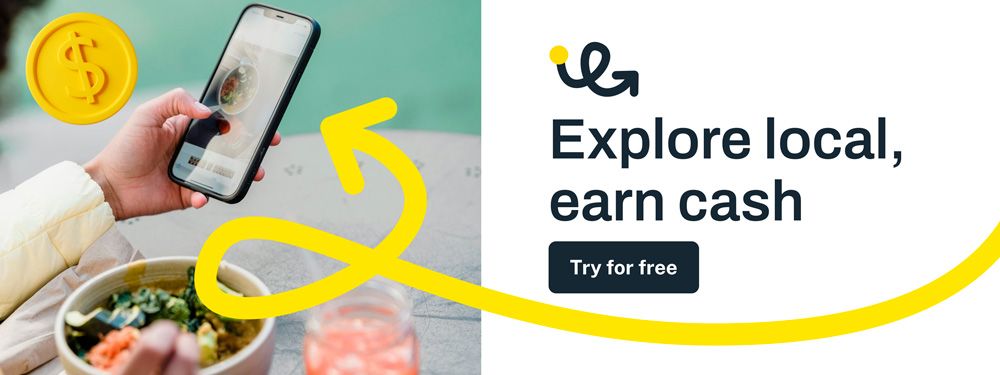7 Effective Customer Loyalty Programs for Small Businesses
Discover the power of customer loyalty programs for small businesses. Learn strategies to engage customers, overcome challenges, and foster lasting connections.
Nancy J. Hassler
Picture this: a small business where customers don't just make a purchase and leave; instead, they keep coming back, not only for your products or services but for the unique experience you offer. What's the secret behind such customer dedication? The answer lies in effective customer loyalty programs.
As a small business owner, you've likely pondered the best ways to not only attract new customers but to turn those one-time buyers into loyal patrons. – 75% of customers actively choose a company that offers a rewards program.
In a world where consumer choices abound, the ability to foster and maintain loyalty is a game-changer. Let's dive into the realm of customer loyalty programs and discover how they can be the key to unlocking success for your small business

What is a customer loyalty program?
A customer loyalty program is a structured marketing strategy designed to encourage repeat business by rewarding and incentivizing customers to continue engaging with a particular brand or business. These programs are crafted to foster a sense of loyalty and affinity between the company and its customers, ultimately driving customer retention.
At its core, a customer loyalty program typically offers special benefits, rewards, or exclusive perks to individuals who make repeated purchases or demonstrate ongoing brand allegiance. The goal is to create a positive feedback loop where customers feel appreciated and are motivated to continue choosing the brand over competitors.
The mechanics of loyalty programs can vary widely, but they often include elements such as
- points accumulation,
- tiered memberships,
- exclusive discounts,
- early access to new products,
- even personalized offers tailored to individual customer preferences.
Customers usually sign up for these programs, providing their information to the company, and in return, they receive a unique identifier, such as a membership card or a digital account, which tracks their participation and rewards.

Benefits of Implementing Customer Loyalty Programs
Here are some key benefits that highlight the significance of having a robust loyalty program:
Enhanced Customer Retention A loyalty program is a powerful tool for retaining existing customers. By providing incentives and exclusive rewards, businesses can foster a sense of attachment, making it more likely that customers will choose to stay loyal to the brand.
Increased Customer Lifetime Value Loyalty programs contribute to the long-term value of each customer. As patrons accumulate rewards and engage with the brand over time, their spending tends to increase, leading to a higher overall customer lifetime value.
Cost-Effective Marketing Acquiring new customers can be a costly endeavor. In contrast, retaining existing customers through a loyalty program is often more cost-effective. Satisfied customers are more likely to make repeat purchases, reducing the need for extensive marketing efforts to attract new clientele.
Positive Word-of-Mouth Marketing Loyalty programs create satisfied customers who are more inclined to become brand advocates. Happy customers are likely to share their positive experiences with friends and family, generating positive word-of-mouth marketing and potentially attracting new customers.

Types of customer loyalty programs for small businesses
Points-Based Programs
Points-based programs involve customers earning points based on their purchase activities. For every transaction, customers accumulate a specific number of points, creating a tangible and quantifiable reward system.
Customers can redeem accumulated points for a range of rewards, such as discounts, free products, or exclusive services. The redemption process creates an incentive for customers to continue making purchases to accrue more points and unlock desirable rewards.
Examples of Successful Implementation: A local coffee shop may offer customers points for each coffee purchase. Accumulated points can be redeemed for free drinks, discounts, or even branded merchandise.
Tiered Loyalty Programs
Tiered loyalty programs categorize customers into different levels or tiers based on their engagement and spending. Typically, these tiers include basic, silver, gold, and platinum, each offering escalating benefits and rewards.
Case Studies of Tiered Programs: Many airlines have tiered loyalty programs where passengers move from basic to elite tiers based on the miles flown or money spent. Elite tiers offer perks like lounge access, priority boarding, and increased baggage allowances.
Cashback Programs Overview
Cashback loyalty programs involve rewarding customers with a percentage of their purchase amount returned to them in cash or store credit. This straightforward approach provides a tangible benefit for every transaction, encouraging customers to continue shopping with the business.
Discount programs offer customers reduced prices on products or services as a reward for their loyalty. Whether through tiered discount levels or occasional promotions, this model incentivizes customers to make purchases while enjoying cost savings.
Examples of Cashback and Discount Programs: E-commerce platforms often implement cashback programs where customers receive a percentage of their purchase value back as credit for future transactions.
Exclusive Access and VIP Programs
Exclusive access and VIP programs focus on offering select customers special privileges, such as early access to new products, limited-edition items, or members-only content. This creates a sense of exclusivity and value for the customer.
VIP programs go beyond transactions, aiming to build a community of valued customers. This could involve exclusive events, personalized services, or direct interaction with the brand, fostering a deeper connection between the business and its most loyal patrons.
Success Stories from VIP Programs: Streaming platforms offer VIP or premium tiers with exclusive content, early releases, and an ad-free experience, creating a dedicated community of subscribers.
Subscription Programs
Subscription programs, also referred to as premium loyalty programs, involve customers subscribing and paying an upfront fee for a specific product or service. In return, participants receive rewards that can be redeemed for future purchases.
Refer-a-Friend Programs
Refer-a-friend programs incentivize customers to refer their friends and family, turning loyal buyers into enthusiastic brand advocates. This word-of-mouth strategy not only strengthens existing customer loyalty but also has the potential to generate additional referrals in the future.
Cashback Programs
Cashback rewards programs provide customers with actual cashback or credits to spend with the business. This approach instills a sense of value for customers, making them feel that, despite spending money, they are receiving something tangible in return.

Examples of successful customer loyalty programs
Starbucks
Type: Points-Based Program Why it Works: Starbucks Rewards offers customers points for every purchase, which can be redeemed for free drinks, food items, or merchandise. The mobile app provides a seamless experience for tracking points, personalized offers, and ordering ahead.
Amazon Prime
Type: Subscription-Based Program Why it Works: Amazon Prime is a premium loyalty program that offers subscribers benefits such as free shipping, exclusive access to streaming services, early access to deals, and more. The comprehensive range of perks encourages customer loyalty and increased spending on the platform.
Sephora Beauty Insider
Type: Tiered Program Why it Works: Sephora's Beauty Insider program has multiple tiers, each offering escalating rewards. Customers earn points for purchases, gain access to exclusive events, and receive personalized product recommendations. The tiered structure motivates customers to strive for higher levels of engagement.
NikePlus
Type: Community Program Why it Works: NikePlus fosters a community of fitness enthusiasts. Members receive exclusive access to product launches, personalized training plans, and invitations to member-only events. Community engagement strengthens the emotional connection with the brand.

How to Implement Customer Loyalty Programs for Small Businesses
Step 1: Collect Customer Data:
- Implement a system for gathering customer information, including contact details, purchase history, and preferences.
- Use surveys, feedback forms, or loyalty program sign-ups to encourage customers to share relevant information.
- Ensure compliance with data privacy regulations and communicate the benefits of data sharing to build trust.
Step 2: Analyzing Customer Behavior:
- Leverage data analytics tools to analyze customer behavior, identifying patterns and preferences.
- Understand the frequency and types of purchases, preferred products or services, and factors influencing buying decisions.
- Identify high-value customers and their unique preferences to tailor loyalty program offerings.
Step 3: Considering Your Industry:
- Evaluate the nature of your business and industry to determine the most suitable loyalty program type.
- For retail, points-based or punch-card programs may be effective, while subscription-based programs may work well for service-oriented businesses.
- Consider industry benchmarks and competitor loyalty programs for insights.
Step 4: Implement Loyalty Program Software:
- Invest in loyalty program software that streamlines program management, data tracking, and reward distribution.
- Choose a platform that allows for customization, scalability, and integration with other business systems.
- Utilize analytics features to gain insights into program performance and customer behavior.
- Develop a mobile app or utilize existing digital platforms to make the loyalty program accessible to customers.
- Leverage push notifications to communicate exclusive offers and updates directly to customers.
Conclusion
For small businesses, the implementation of effective customer loyalty programs is not just a strategic choice but a necessity. These programs offer a unique opportunity to understand, engage, and retain customers in a meaningful way. By tailoring loyalty initiatives to the specific needs and preferences of your customer base, small businesses can create a competitive edge, enhancing their market presence and fortifying their position in the hearts of consumers.
Remember, the journey to building customer loyalty is an ongoing process that evolves with the changing landscape of business and consumer expectations.
